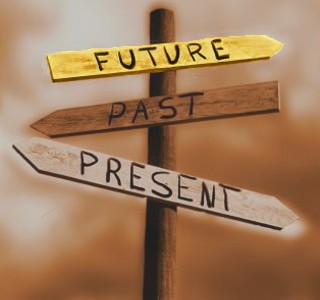Italo Calvino could have written
the book Invisible Cities in a much simpler way. He could have written
directly what he wanted the reader to know, but he was aware how detrimental
this would be to the book. By representing everything that is pertinent to
life and the world with cities he created a rich allegory. “Returning from the
missions on which Kublai sent him, the ingenious foreigner improvised
pantomimes that the sovereign had to interpret.”(p.21) Italo Calvino being
Marco Polo, the ingenious foreigner, and us the readers being Kublai Khan, we
assume set roles. In this relationship Calvino provides us with emblems and it’s our job to
decipher them.
“The descriptions of cities Marco
Polo visited had this virtue: you could wander through them in thought, become
lost, stop and enjoy the cool air, or run off.”(p.38) When we read Calvino’s
descriptions we become engaged and are forced to reflect. The book doesn’t
express Calvino’s exact opinion. Instead we read his words and are guided to
create our own thoughts. When we read each idea we mold it according to our
own experiences, memories and lives. “It is not the voice that commands the
story: it is the ear.”(p.135)
At the end Kublai Khan and Marco
Polo played a chess game that represented what the cities had symbolized throughout the book. As they started to play Kublai analyzed the game and he,
“arrived at the extreme operation: the definitive conquest, of which the
empire’s multiform treasures were only illusory envelopes. It was reduced to a
square of planed wood: nothingness.” However, when he mentioned this conclusion
to Marco Polo, “the quantity of things that could be read in a little piece of
smooth and empty wood overwhelmed Kublai; Polo was already talking about ebony
forests, about rafts laden with logs that come down the rivers, of docks, of
women at the windows.” Like Kublai the reader might start to believe that after
removing all the pieces from the chessboard, which represent people and
objects, the board becomes a meaningless slab of wood, which represents the
world. However, through Polo’s words Calvino demonstrates that this is not the
case at all. The apparently simple slab of wood can go on to hold a new meaning
all together. Maybe it will no longer be the setting for the game’s figurines,
but it continues nonetheless. By talking about ebony forests and rafts carrying
logs down a river he demonstrates how there is more than one way to see a given
object. The chessboard didn’t have to be purposeful OR meaningless, it could
form any part of an array of different items.
As for the numerous ideas conveyed through
the cities’ descriptions each one has it's own specific
value. However, at the end there’s one last idea that seems to tie all the
other ones together. Polo says: “There are two ways to escape suffering…Accept
the inferno and become such a part of it that you can no longer see it…[or]
seek and learn to recognize who and what, in the midst of the inferno, are not
inferno, then make them endure, give them space.”(p.165) We as the readers are
well versed in the idea that the world holds endless amounts of evils. In fact,
this idea has probably been even further enforced in our minds after reading
this book. However, Calvino gives us a final challenge one that goes much
farther than just reflecting and understanding his cities. He invites us to
take this knowledge and either take one of two paths. The first is simple, we
can become perverse and evil, just like the world we live in. He doesn’t condemn
it since those that choose it could potentially justify it by saying that they
are simply adhering to their surroundings. Yet, he clearly shows that the second
option is riskier and much more complicated than the first. The second option
consists of searching for the good in the world, finding it and propagating it.
Calvino leaves us on this note, with an idea that not only ties everything
together, but stays resounding in our minds, louder than words.








